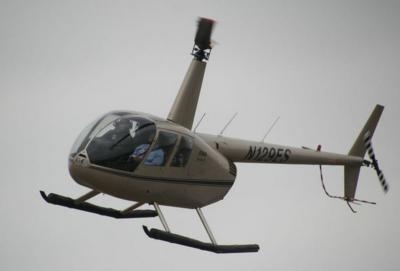Wed, Feb 25, 2015
Aircraft Grounded In Australia After Fatal Accident In New Zealand
The FAA has issues a Special Airworthiness Information Bulletin (SAIB SW-15-08) directed towards owners and operators of Robinson Helicopter Company model R44 and R44 II helicopters which have installed main rotor blades with part number C016-7 of a fatigue crack occurrence, and suggests a preflight check for signs of a fatigue crack on the trailing edge of the blade.

The FAA has received a report from New Zealand of an in-flight failure of the main rotor blade on a Robinson R44 II helicopter which resulted in severe main rotor vibration. The aircraft was difficult to control during the subsequent emergency landing. The New Zealand CAA released Continuing Airworthiness Notice – 62-003 on January 26, 2015 recommending a pre-flight inspection of this area. Robinson Helicopter Company subsequently released R44 Safety Alert C016-7 Main Rotor Blade Crack on February 23, 2015 recommending a preflight visual inspection of the trailing edge of the main rotor blade for any evidence of a fatigue crack initiation.
Australia's Civil Aviation Safety Authority (CASA) issued an emergency airworthiness directive grounding certain Robinson R44 helicopters operating in that country following the New Zealand accident.
The FAA says that at this time, the airworthiness concern is not an unsafe condition that would warrant airworthiness directive (AD) action under Title 14 of the Code of Federal Regulations (14 CFR) part 39.
The FAA says that as part of the daily preflight inspection, the trailing edge of the main rotor blade on the upper and lower surfaces of the blade (a stepladder may be necessary) should be visually checked for any damage which may initiate a fatigue crack. Check in the area shown on the Robinson Safety Alert C016-7 Main Rotor Blade Crack, dated February 23, 2015. If any damage is detected, the blade should be thoroughly examined by a qualified technician prior to further flight. If unusual rotor system vibration is detected in flight, land immediately and have blades examined by a qualified technician.
It is recommended that any positive findings be reported to the Robinson Helicopter Company.
(Image from file)
More News
Also: Vertical Flight Society, NBAA Maintenance Conference, GA Honored, AMT Scholarship For the first time, students from Embry-Riddle’s Daytona Beach, Florida, campus took t>[...]
Hazardous Weather Information Summary of significant meteorological information (SIGMET/WS), convective significant meteorological information (convective SIGMET/WST), urgent pilot>[...]
"The need for innovation at speed and scale is greater than ever. The X-62A VISTA is a crucial platform in our efforts to develop, test and integrate AI, as well as to establish AI>[...]
(FAA) Inspector Observed That Both Fuel Tanks Were Intact And That Only A Minimal Amount Of Fuel Remained In Each Analysis: According to the pilot, approximately 8 miles from the d>[...]
“Pyka’s Pelican Cargo is unlike any other UAS solution on the market for contested logistics. We assessed a number of leading capabilities and concluded that the Pelica>[...]
 Airborne-Flight Training 05.09.24: ERAU at AIAA, LIFT Diamond Buy, Epic A&P
Airborne-Flight Training 05.09.24: ERAU at AIAA, LIFT Diamond Buy, Epic A&P ANN's Daily Aero-Term (05.07.24): Hazardous Weather Information
ANN's Daily Aero-Term (05.07.24): Hazardous Weather Information Aero-News: Quote of the Day (05.07.24)
Aero-News: Quote of the Day (05.07.24) NTSB Final Report: Cessna 150
NTSB Final Report: Cessna 150 Aero-News: Quote of the Day (05.08.24)
Aero-News: Quote of the Day (05.08.24)



